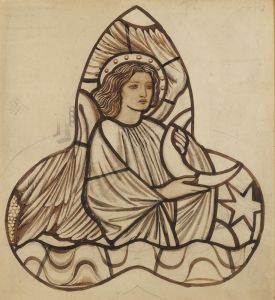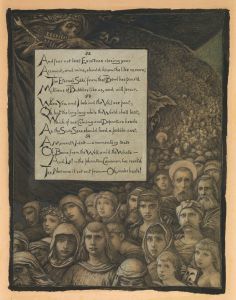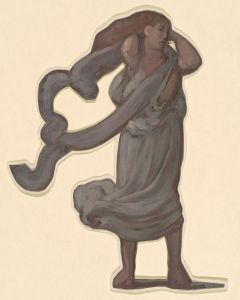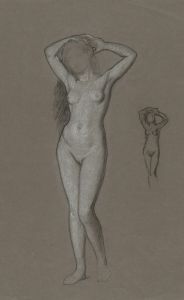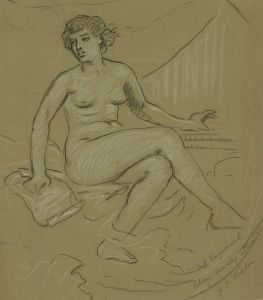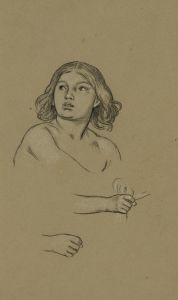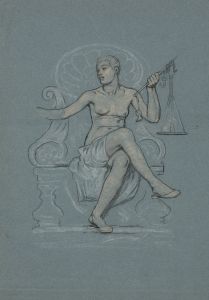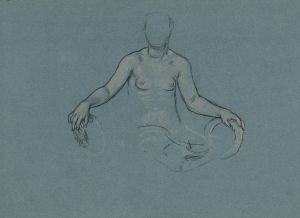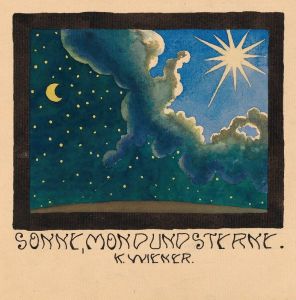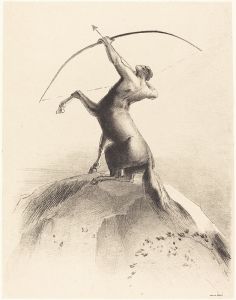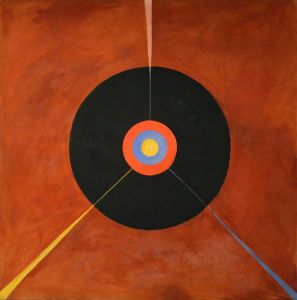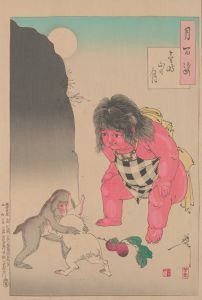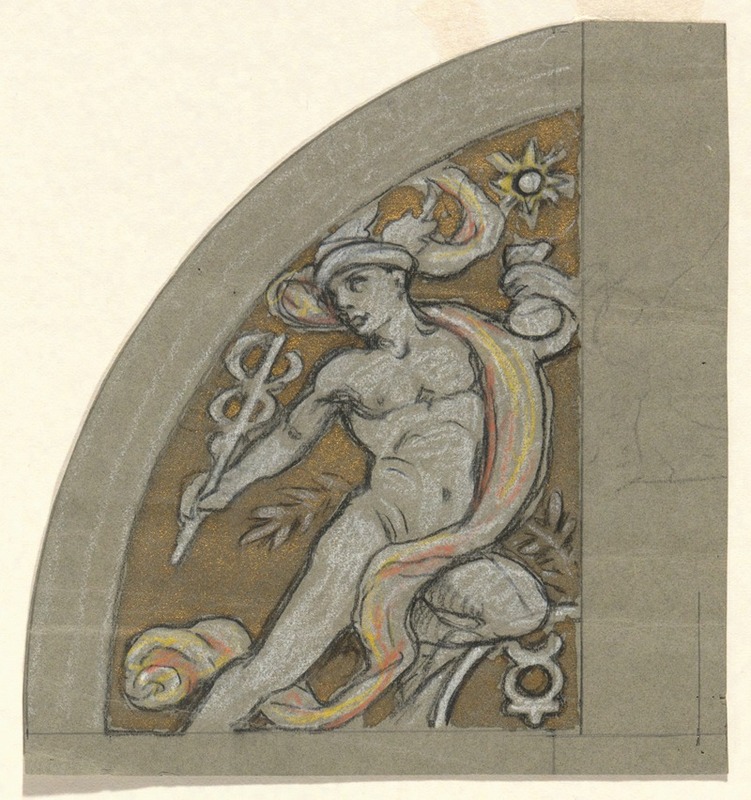
Study for Mercury
A hand-painted replica of Elihu Vedder’s masterpiece Study for Mercury, meticulously crafted by professional artists to capture the true essence of the original. Each piece is created with museum-quality canvas and rare mineral pigments, carefully painted by experienced artists with delicate brushstrokes and rich, layered colors to perfectly recreate the texture of the original artwork. Unlike machine-printed reproductions, this hand-painted version brings the painting to life, infused with the artist’s emotions and skill in every stroke. Whether for personal collection or home decoration, it instantly elevates the artistic atmosphere of any space.
Elihu Vedder was an American symbolist painter, born on February 26, 1836, in New York City. He is best known for his allegorical works and his illustrations for Edward FitzGerald's translation of "The Rubaiyat of Omar Khayyam." Vedder's artistic style is characterized by a blend of realism and symbolism, often exploring themes of mythology, dreams, and the human condition.
"Study for Mercury" is one of Vedder's works that reflects his interest in classical mythology. Mercury, known as Hermes in Greek mythology, is the Roman god of commerce, communication, and travel, often depicted as a messenger with winged sandals and a caduceus. In art, Mercury is frequently portrayed as a youthful and agile figure, embodying speed and eloquence.
Vedder's study likely served as a preparatory work for a larger composition or as an exploration of the figure of Mercury. Such studies were common practice for artists, allowing them to experiment with form, posture, and expression before committing to a final piece. While specific details about "Study for Mercury" are limited, it can be inferred that Vedder's rendition would have incorporated his signature style, blending mythological subject matter with a symbolic and possibly mystical interpretation.
Throughout his career, Vedder was influenced by his travels and the various artistic movements of his time. He spent significant periods in Italy, where he absorbed the influences of the Renaissance and the burgeoning symbolist movement. These experiences enriched his work, allowing him to merge classical themes with contemporary artistic ideas.
Vedder's contributions to art were recognized during his lifetime, and he was associated with the American Pre-Raphaelites and the Aesthetic Movement. His works often evoke a sense of mystery and introspection, inviting viewers to delve into the deeper meanings behind the imagery.
While "Study for Mercury" may not be as widely known as some of Vedder's other works, it represents an integral part of his artistic exploration of mythological themes. Vedder's ability to infuse classical subjects with a modern sensibility has left a lasting impact on the art world, and his works continue to be studied and appreciated for their unique blend of realism and symbolism.
Elihu Vedder passed away on January 29, 1923, in Rome, Italy, leaving behind a legacy of art that continues to inspire and captivate audiences. His works are held in various collections, including the Metropolitan Museum of Art and the Smithsonian American Art Museum, ensuring that his contributions to the art world are preserved and accessible to future generations.





